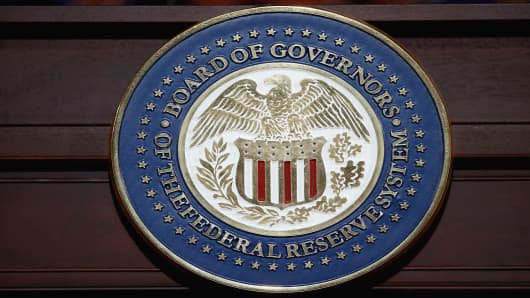A confidence-crushing May jobs reporthas turned market talk back to the idea of more Federal Reserve easing. But the question is: How much more can the central bank do with Treasury yieldsat record lows.
Friday’s employment report showed that just 69,000 jobs were created in last month, less than half of what Wall Street expected. The unemployment rate crept up to 8.2 percent from 8.1.
On top of that, revisions made for March and April erased 49,000 jobs from those two months.
“This alone doesn’t bring the Fed back in—but this combined with Europe brings the Fed back in,” said Mesirow Financial chief economist Diane Swonk. “The Fed needs to keep its powder dry for a potential financial crisis (from Europe), and that possibility just went up. This underscores that we’re not an island.”
Fed officials, including the more dovish, had been signaling that they are not ready to carry out another round of quantitative easing , or asset purchases. Those comments had lowered the market’s expectations for any action at the June 19 meeting. It also was believed that the Fed would let its ‘Operation Twist’ expire on schedule at the end of June.
Now, however, there are growing expectations that the Fed may move sooner than later. With inflationnot a threat, some economists expect the Fed either to extend Operation Twist or go further with a new program.
“The June meeting is in three weeks," said Peter Boockvar, Miller Taback market strategist. "I’m sure we’ll get an announcement on Operation Twist, which expires and maybe they’ll sprinkle more stuff on top of it. But before that I think the Europeans will have to put something in place before the (June 17) Greek election.”
The European Central Bankmeets Wednesday, and there is speculation it could cut rates. There were also market rumors Friday that it would buy Spanish and Italian debt.
The Fed’s Operation Twist involves its purchases of longer-dated Treasury securities, as it sells the same amount of shorter term securities, in an effort to bring down long-term rates.
But those rates have fallen to new lows as fears of a euro crisis have risen. The 10-year Treasury Friday touched a record low of 1.439, and the 30-year was as low as 2.51 percent.
As a result, another round of Fed easing would do very little, Pierpont Securities chief economist Stephen Stanley said.
“I just do not see how anyone would look at the current situation, with 10-year Treasury yields below 1.5 percent and 30-year yields near 2.5 percent, and say that there is a pressing need to try to artificially mash yields even lower,” he wrote in a report.
Stanley notes the Fed’s own research “suggests that QE2 and Operation Twist have been worth only a handful of BPs (basis points, or 100ths of a point) on yields."
"Ten-year yields rallied 30 BPs this week alone, swamping the likely impact of anything the Fed might be able to do!," Stanley said. "The only rationale for further easing at this point is the thoughtlessly mechanical “push the button” mentality that says we ease as long as the unemployment rate is too high.”
“We’re running for the hills, and the hills happen to be Treasurys because there’s a yield curve,” said David Ader, chief Treasury strategist at CRT Capital.
The flight to safety trade escalated this week as the crisis focused on Spain and its weak banking sector. There is also concern that Greece will elect candidates opposed to the bailout and austerity, which might ultimately result in Greece’s exit from the euro zone.
“Now double dip has come back into the rhetoric," Adler said. "QE is irrelevant whether it occurs or not, the markets are telling us something. If I’m in bonds and I’m buying Treasurys at these yields, I may see dollar depreciation but I’ll get my money back.”
The weak U.S. data comes on top of disappointing data overnight from China, which showed weaker than expected manufacturing activity. U.S. ISM data, released after the jobs number, also showed a slowing to 53.5, but new orders in that number were a bright spot, rising to a level of 60.1, the highest in a year.
“These numbers were disappointing. They confirm the economy has slowed considerably from early in the year. This puts the Fed in a very difficult position, but I think reluctantly they’re going to push the accommodation button again,” said Ward McCarthy, Jefferies chief financial economist.
McCarthy said the Fed could extend twist, and possibly use it to buy mortgage securities. He also said the Fed might consider doing a “sterilized” version of QE, where it buys securities but reverses out an equal amount, similar to twist but not a duration move.
“Some type of accommodation that does not increase the balance sheet makes sense now," he said. "You can make the case they should do more right now to get the U.S. economy on more solid footing, but at the same time, they probably want to save a whole lot of powder in the event Europe implodes and or our own politicians in Washington blow us up with the fiscal cliff.”
Follow Patti Domm on Twitter: @pattidommQuestions? Comments? Email us at marketinsider@cnbc.com




